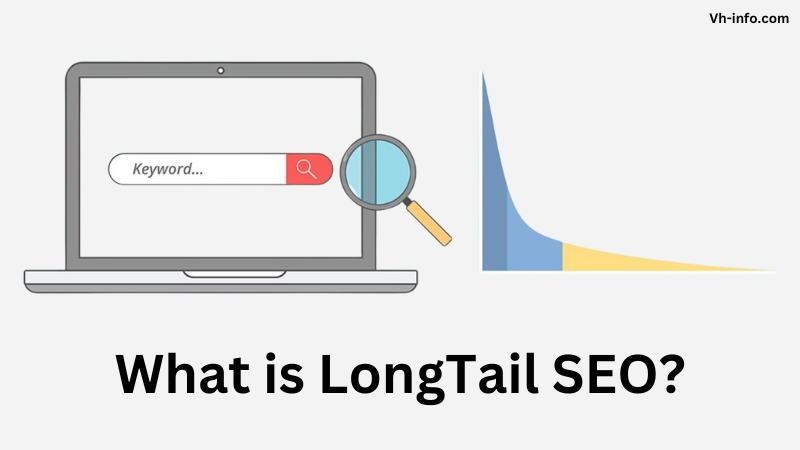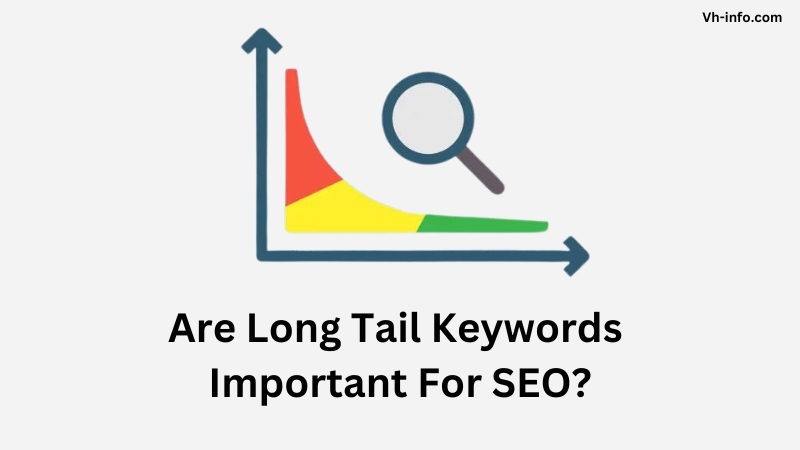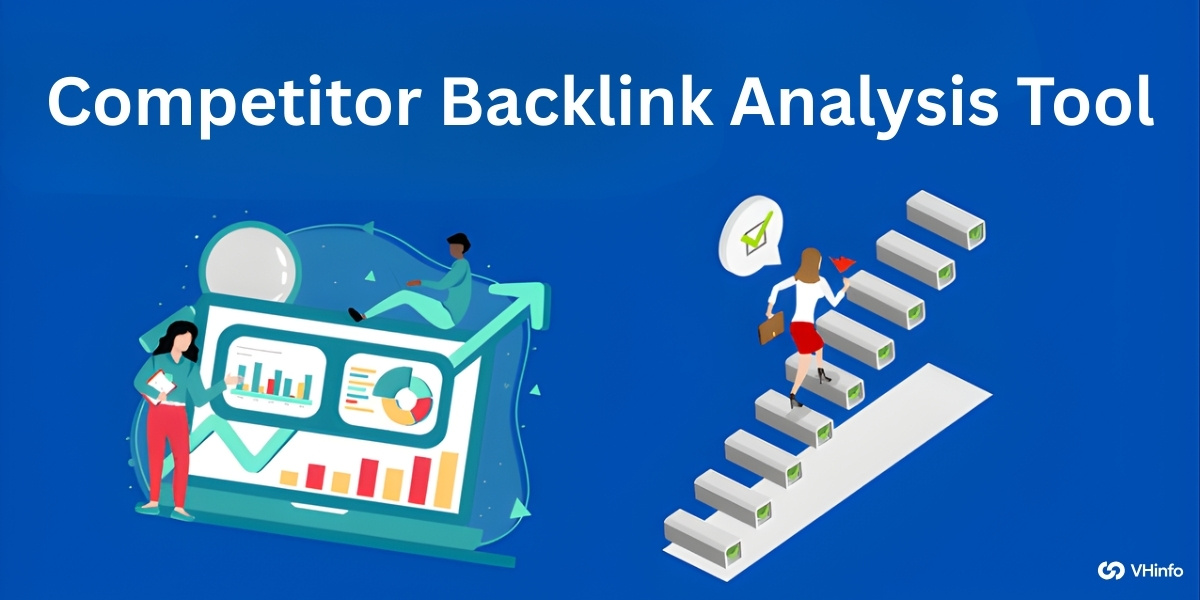As a SaaS company, driving targeted organic traffic to your website is important for sustainable growth. While traditional SEO focuses on broad, high-volume keywords, a lesser-known but highly effective strategy is to target long-tail keywords.
At VH-info, we specialize in helping SaaS brands like yours leverage the power of long-tail SEO to boost rankings, attract qualified leads, and maximize conversions.
In this ultimate guide, we’ll dive deep into the world of long-tail SEO. We’ll explain what it is, why it matters, and how to develop a winning strategy for your SaaS business.
Before Understanding longtail keywords for SEO, we need to understand what is a head term. Let’s get started!
What is a Head Term?
A head term in SEO refers to a broad, general keyword that is typically short and generic. These keywords have high search volume but also high competition. In contrast, long-tail keywords are more specific and longer phrases that target a niche audience with less competition. By focusing on long-tail keywords, SaaS companies can attract highly targeted organic traffic and improve their conversion rates.
What is LongTail SEO?

Long-tail SEO is the practice of optimizing your website for highly specific, lower-volume search queries. These longer, more targeted phrases are known as “long-tail keywords.” By focusing on these niche terms, you can attract highly qualified traffic that is more likely to convert into customers.
What Are Long-Tail Keywords?

Long-tail keywords are longer, more specific phrases that searchers use when they have a clear intent or are closer to making a purchase decision. For example, instead of searching for a broad term like “project management software,” a user might search for “best project management software for remote teams.”
What Makes a Keyword a ‘Longtail’ Keyword?
Typically, a long-tail keyword has the following characteristics:
- Contains 3+ words
- Has low search volume compared to broad search terms
- Is highly specific and targeted
- Indicates very specific search intent
Are Long Tail Keywords Important For SEO?

Absolutely! While long-tail keywords may have lower search volumes individually, they collectively make up a significant portion of all search traffic. By targeting a wide range of long-tail terms, you can attract a steady stream of highly targeted visitors to your SaaS website.
5 Powerful Reasons to Use Long-Tail SEO
Here are five compelling reasons why every SaaS company should include long-tail SEO in their marketing strategy:
- Reach your Target Audience Faster: Long-tail keywords help you connect with users who are actively searching for solutions like yours. By optimizing for these specific terms, you can fast-track your way to the top of search results and get in front of your ideal customers.
- Decrease Search Competition: While broad keywords are highly competitive, long-tail terms have less competition. This means it’s easier and faster to rank for long-tail keywords, even if you’re a newer SaaS brand.
- Improve your Conversion Rates: Long-tail keywords indicate high purchase intent. By attracting users who are further along in the buyer’s journey, you can significantly boost your conversion rates and generate more qualified leads.
- Lower your Digital Marketing Costs: Targeting less competitive long-tail terms can help you get more bang for your buck with paid search campaigns. Lower cost-per-click means you can stretch your budget further and get more targeted traffic for less.
- Adapt your Strategy to User Trends: With the rise of voice search and mobile usage, more people are using natural language and asking specific questions when searching online. Long-tail SEO helps you adapt to these changing user behaviors and stay ahead of the curve.
What is a Long-Tail SEO Strategy?

A long-tail SEO strategy involves researching, selecting, and optimizing for targeted long-tail keywords across your SaaS website. The goal is to create valuable content that matches user intent and ranks well for relevant long tail queries on google search.
How Can Longtail Keywords Improve SEO Rankings?
Targeting long-tail keywords can help improve your SEO rankings in several ways:
- Less competition makes it easier to rank on the first page
- Matching user intent signals relevance to search engines
- Attracting engaged visitors improves engagement metrics
- Building topical authority with comprehensive content
How Does User Intent Play a Role in Longtail SEO Optimization?
Understanding and matching user intent is key to successful long-tail SEO. When selecting keywords, consider what stage of the buyer’s journey the user is in and what type of content would best meet their needs. Aligning your content with search intent helps you rank higher and drive more conversions.
What Are the Benefits of Focusing on Longtail SEO Over Traditional SEO?
While traditional SEO focuses on broad, high-volume keywords, long-tail SEO offers several unique benefits for SaaS companies:
- Faster rankings for newer websites
- More targeted, qualified traffic
- Higher conversion rates
- Lower customer acquisition costs
- Ability to rank for question-based queries
- Adapt to voice search and mobile trends
4 Steps For Developing An Effective Long-Tail SEO Strategy
Ready to harness the power of long-tail SEO for your SaaS business? Follow these four steps to develop a winning strategy:
- Conduct Keyword Research: Use tools like Google Keyword Planner, SEMrush, and Ahrefs to uncover relevant long-tail keywords. Look for terms with lower competition but enough search volume to be worthwhile. Don’t forget to consider question-based queries and related topics.
- Match Terms to Content: Map your selected keywords to existing or new content on your website. Ensure each piece comprehensively covers the topic and matches user intent. Consider creating ultimate guides, tutorials, comparison posts, and FAQ pages.
- Optimize and Create Content: Optimize your content by naturally including long-tail keywords into page titles, headings, meta descriptions, and body copy. Aim to create the best resource on the web for each target keyword. Don’t forget about on-page SEO best practices like fast load times and mobile-friendliness.
- Test and Reoptimize: Monitor your content’s performance using tools like Google Analytics and Search Console. Track keyword rankings, organic traffic, engagement metrics, and conversions. Continuously update and reoptimize your content based on performance data and user feedback.
Researching Long Tail Keywords

Effective keyword research is the foundation of any successful long-tail SEO strategy.
How Do I Know What SEO Keywords to Use?
Start by brainstorming seed or head keywords related to your SaaS product or service. Then, use keyword research tools to uncover long-tail variations, related topics, and question-based queries. Analyze search volume, competition levels, and relevance to identify the best opportunities.
What is the Value of Keywords in SEO?
Keywords help connect your content with search queries, signaling relevance to both users and search engines. By strategically including keywords, you can improve your rankings, drive targeted traffic, and ultimately generate more leads and customers for your SaaS business.
Keyword Placement: Where Should You Put Keywords?
Include long-tail keywords naturally throughout your content, including:
- Page titles and meta descriptions
- Headings and subheadings
- Introductory and concluding paragraphs
- Image alt text
- Anchor text for internal links
Avoid keyword stuffing, which can hurt your rankings. Focus on creating valuable, keyword-rich content that reads naturally.
How to Find Keywords With High Search Volumes?
While long-tail keywords typically have lower search volumes, you can still find high-volume opportunities. Use tools like Google Keyword Planner and Ahrefs to identify long-tail terms with significant search demand. Look for keywords with a healthy balance of volume and competition.
What Are The Common Mistakes to Avoid When Implementing a Longtail SEO Strategy?

To succeed with long-tail SEO, avoid these common pitfalls:
- Targeting irrelevant or overly broad keywords
- Neglecting user intent and search context
- Focusing solely on search volume, not competition or relevance
- Stuffing keywords unnaturally into content
- Ignoring on-page SEO best practices
- Failing to promote content and build backlinks
- Not tracking performance or adjusting strategy based on data
Examples of Successful Longtail SEO Campaigns

Many SaaS companies have achieved impressive results with long-tail SEO. For example:
- HubSpot ranks for thousands of long-tail keywords related to marketing, sales, and customer service. Their comprehensive blog posts and guides drive millions of visitors each month.
- Ahrefs, an SEO tool provider, targets long-tail keywords in their blog content and product pages. They rank for highly specific terms like “free backlink checker” and “website authority checker.”
- Zapier, a workflow automation tool, optimizes its app directory for long-tail keywords related to specific integrations. Pages like “How to connect Google Sheets and Google Calendar” attract targeted traffic.
By following the strategies outlined in this guide, you too can achieve long-tail SEO success for your SaaS business.
FAQ’s:
How Often Should I Review and Update My Longtail SEO Strategy?
Aim to review and adjust your long-tail SEO strategy at least quarterly. As you gather more data and insights, you may need to refine your keyword targets, update content, or experiment with new tactics.
Are Long Tail Keywords Still Working?
Yes! While search behaviors evolve, long-tail keywords remain a highly effective way to drive targeted organic traffic. As long as you focus on matching user intent and creating valuable content, long-tail SEO can deliver powerful results.
How Can Businesses Effectively Implement a Longtail SEO Strategy?
To effectively implement a long-tail SEO strategy, focus on:
- Thorough keyword research to identify opportunities
- Mapping keywords to content that matches user intent
- Optimizing new and existing content for target keywords
- Building topical authority with comprehensive resources
- Promoting content and earning high-quality backlinks
- Tracking performance and adjusting strategy based on data
Is Longtail Keyword Targeting Still a Good SEO Technique?
Absolutely. Long-tail keyword targeting remains one of the most effective SEO techniques, especially for SaaS companies. By focusing on specific, intent-driven phrases, you can attract qualified traffic, rank faster, and drive more conversions.
Conclusion
Long-tail SEO is a powerful strategy for SaaS companies looking to drive targeted organic traffic and sustainable growth. By optimizing for specific, intent-driven keywords, you can outrank competitors, attract qualified leads, and boost conversions.
At VH-info, we specialize in helping SaaS brands like yours develop and execute effective long-tail SEO strategies. Our proven process and expertise can help you unlock the full potential of organic search.
Ready to get started with long-tail SEO? Contact the VH-info team today to learn more about our SaaS link building services and how we can help you achieve your growth goals.



